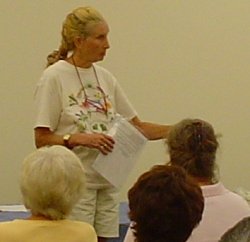Eye and eyesight problems
The following article gives some information about eye and eyesight trouble.
Why are eyesight problems so common?
Our eyes allow us to experience the world around us perhaps more so than any of our other senses. Yes, we have our ears, sense of smell, our touch and taste, but probably the thing we value the most is our sense of sight. All of these 5 basic senses are important, but sight is probably the one that brings us the most joy in our lives.
Just like the rest of our body, our senses can be improved and they can also deteriorate. Sometimes people are dealt a bad hand in life and are born with health problems which makes life a challenge, to say the least. Often though, our health can be managed and this applies to our eyes.
Our general health and well-being has a direct correlation with how healthy our eyes are. There are always exceptions, but if one's general health is good, in most cases the health of our eyes is usually good.
A large proportion of our eyes contain lots of water. Unsurprisingly, people who don't drink enough water are more susceptible to developing eye problems.
We are not including in this analysis the fact that many people wear spectacles. It is possible to have healthy, disease-free eyes but still have to wear spectacles. This is just a fact of living on planet earth in a human body. What we are referring to is the general health of the eyes. Whether they are disease free. Whether there is good blood flow to the backs of our eyes. Whether the nerve and muscles which control the eyes are healthy and whether the images and visual stimuli we observe are being processed by our brains. This is different to whether an image is focussed properly or not (spectacles etc.).

How to avoid having tired eyes
A fundamental problem many people experience is tired eyes. This can occur for many reasons, the most basic of which is not enough sleep. With some effort and a change in lifestyle, we can all improve how much sleep we get each night. We may have to take steps to ensure we sleep in as distraction-free environment as possible. Factors to look into include: mattress comfort, pillow comfort, noise and temperature of the room etc. These can all be improved if we take the time to eliminate the non-optimum conditions. Just doing this can be a big help
In the last 100 years or so, humans' daily habits have changed in incredible ways. Less and less of us get to work outside. Farming mechanisation and the growth of factories has meant that more of us now work indoors.
In even more recent times, many of us now spend large proportions of our days sitting in front of computer screens, or using smart phones or sitting in front of TV screens watching our favourite programs and movies.
One of the consequences of this change is that our eyesight attention tends to be much closer to us than in the past. We are often focussed on objects that are just a few feet in front of us for hours on end.
Not many of us have the option to simply stop working this way, but we can manage it better. Every half an hour or so, we should look around the room we are in and change what we focus on. In an office, we can get up from our computers for a minute or two and consciously gaze at objects that are much further away. Just these simple steps throughout the day can bring relief to the muscles in our eyes.

Some other things we can do to Improve eyesight and eyes
As the name of the herb suggests, Eyebright is a traditional remedy for eye problems, since the fourteenth century. First records of such use are from the 14th century herbalist Hilegrade who recommended it to "strengthen the head, eyes, and memory". The fact that the herbs' French name, loosely translates as 'throw away your glasses' testifies to its reputation. Culpeper wrote: "If the herb was as much used as it is neglected, it would half-spoil the spectacle makers trade".
Today eyebright is recommended by herbalists where there is a discharge from the eyes, for treating conjunctivitis and for allergic reactions that affect the eyes. Eyebright is an astringent, anti-inflammatory and relieves catarrh.
Chervil and Fennel
Chervil comes from a Greek word meaning 'leaf of rejoicing'. This herb enjoys a fine reputation for treating eye disorders, including severe inflammation of the deeper structures of the eye, detached retina and cataract. When combined with eyebright the results can be quite astonishing.
In stories passed down from generation to generation, it was said that snakes ate fennel before shedding their skin to restore youth, and after shedding their skin to revive their eyesight! Fennel is an anti-inflammatory and herbalists use it to treat inflammation of the eye.
Use Echinacea, Astragalus and Ginseng to boost your immune system
Echinacea is a great immune booster. It has become one of the most popular herbs in the world. The various Red Indian tribes in America have used this for countless thousands of years as one of their magic fixes. Amongst other things they also used it as a natural antibiotic. It is important to get a fresh source such as ours. This makes a big difference to the potency of the herb.
In other parts of the world, the local inhabitants used herbs which were native to their own countries. Two herbs that have some similar properties to echinacea are Astragalus and Ginseng. Astragalus became popular in India and surrounding countries. Ginseng became incredibly popular in China and Japan etc.
As world trading and travel becomes more normal, herbs from other countries are becoming more available. We take great care in finding and vetting herbs which are grown overseas and these have the same stringent requirements as the UK. This is why we are now able to offer these three herbs on our site.
Another herb which has many benefits is Goldenseal. It is a celebrated Native American medicinal plant. Modern herbalists value the healing action of the root, its astringent properties make it suitable for tired, irritated and itching eyes. Goldenseal contains berberine which constricts the blood vessels, helping to decrease the bloodshot appearance of strained eyes. It also has slight anaesthetic properties which can help to relieve pain. Sadly this herb has been badly managed and it can be difficult to grow as the growing conditions have to be just right. Climate change and bad management on an international scale have almost put this herb onto the endangered list.
Some other natural eye treatment
Marigold takes it botanical name from "calend", which is Latin for the first day of every month, to emphasise its long flowering period. An infusion of the flowers is a soothing eyewash for sore, irritated eyes. The versatile marigold also has useful cosmetic properties. A strong infusion of the petals makes a healing and toning skin lotion for blemished skins, or a softening hair rinse that brings out red highlights in brown or reddish-brown hair.
Fresh cucumber slices placed over the eyes for 10 to 15 minutes refresh sore, tired eyes.
All of these herbs can be used in their tincture form and added to the diet.
Consider taking a nap instead of pushing through the tiredness
We all experience tiredness at times during the day. Most of us push through and force ourselves to carry on. As we mentioned above, do make an effort to change what your eyes are focussing on. Look into the distance for a few seconds. Expand your attention.
If you can, you should consider taking a brief nap. If time and work allow, take a nap for between 15 minutes and 60 minutes. Find out what works best for you. Anything longer than this can cause you to fall into deeper sleep states and make you drowsy when you wake up.
More and more scientific reports are now recognising the benefits of taking a brief nap when you need it. This can help not just your eyes, but also your overall health and lower stress levels and make thinking clearer upon waking.
A final health tip regarding our eyes
When more people worked in factories and did physically demanding jobs than they do today, it was not uncommon to meet someone who had a glass eye fitted. Industrial accidents with eyes used to be far more common than today. Many of us can remember an elderly relative who had this disability. More modern health and safety requirements have dramatically reduced the frequency of these injuries.
Let's all learn from this example and if you are working on DIY projects in your home or elsewhere, always remember to wear safety goggles. Being lazy for a few minutes is not worth taking any chances with our eyes. Teach kids to do the same when they work cutting wood or play a nerf gun battle with their friends. Make putting goggles on a golden rule.

